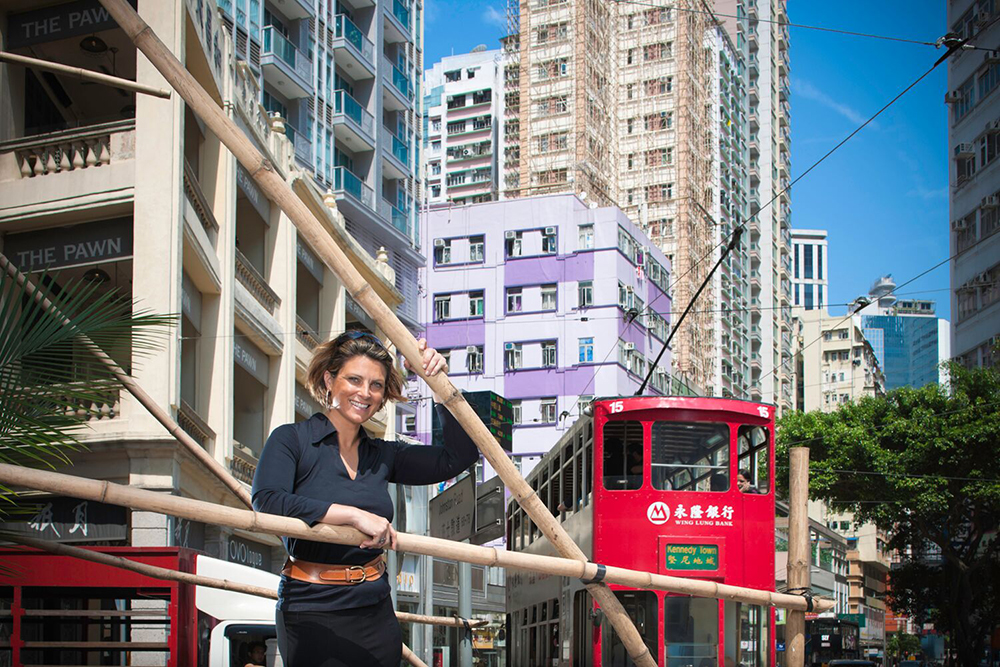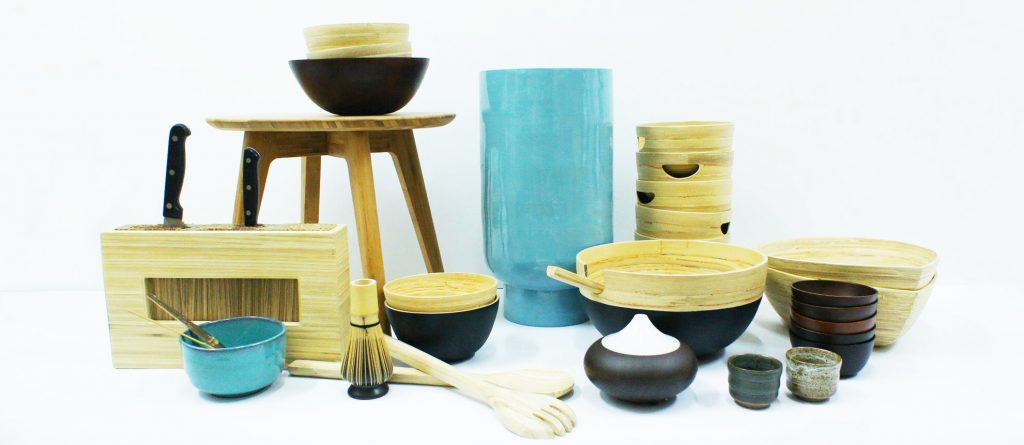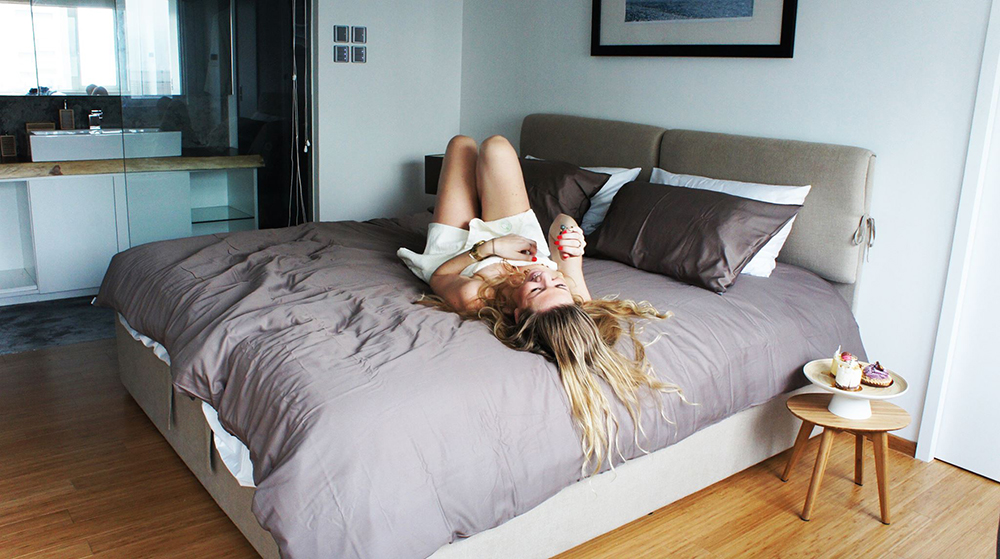An ode to bamboo: you can build with it, sleep in it, eat it, eat with it, wear it, kill odour with it, even pamper your face with it. It grows like a weed and can withstand earthquakes and typhoons. The list of reasons to love bamboo is long and Bamboa, a Hong Kong-based store and community bamboo fan club, thinks this miracle grass can save the world. We’re inclined to agree…
For centuries, bamboo has been lauded as nature’s miracle plant for its myriad uses coupled with its durability and sustainability. This remarkable material is an inexhaustible source of inspiration across a long list of industries and is a rising star in modern construction methods; designers and architects are turning towards bamboo thanks to its versatility, affordability, and abundance. But most importantly, at least in our book, bamboo is completely sustainable. Not only is bamboo stronger than concrete and steel, but it also needs little energy to grow, produces more oxygen and captures more carbon than most other plants, and regenerates almost immediately after it’s cut and in a fraction of the time a tree does. Could bamboo really be the miracle that we’ve all been looking for to reverse the effects of climate change?
We caught up with Julia Washbourne, Director and CEO of Bamboa in Hong Kong, to chat all things bamboo and were blown away by Julia’s bubbling passion for this wonder-grass, its seemingly endless uses, and a long list of incredible facts (bamboo can grow 90cm in one day. Mind. Blown.)

Julia, is bamboo really the miracle material it’s touted to be?
Without doubt, yes. There’s no other sustainable resource that surpasses bamboo in terms of usability. It can be used for thousands of different purposes; from flooring, outdoor decking, scaffolding, and furniture, to bicycles, household products, fabrics, and homewares. The list is endless and the variety that bamboo can offer as an alternative to wood, plastics, or other non-sustainable materials is endless. Compare that to cotton, which can only really be used for
fabric, or hemp which is limited to just a few uses, and you start to get a sense of just how miraculous its versatility makes it.
Where does bamboo actually come from?
There’s so much bamboo in South East Asia, China alone has eight million hectares of bamboo forest. Back in the days of communism, the Chinese government ploughed a lot of money into exploring bamboo as a resource as there was so much of it. They heavily subsidized and supported local farmers to set up factories to make furniture, flooring, or decking in the rural communities where bamboo grows. Then about 20 to 30 years ago they appeared to ‘rediscover’ bamboo and really explored the potential of what could be done with it. What China is doing with bamboo production is brilliant. But it’s not just China, as a region Asia produces a huge amount of the world’s bamboo; Vietnam and Thailand also grow a huge amount. And looking further afield, South America is also, surprisingly, a huge producer. What’s interesting is that there are over 1,500 different types of bamboo and each country has a variety of completely unique species.
Do you think bamboo is instrumental in fighting climate change?
I firmly believe that the major concern for our planet is that we must cut back the CO2 emissions that we’re producing. And we have to do it now. The key to that is reforestation as that will have the most impact. The scale at which this needs to be done is vast; we have to grow enough trees, including bamboo, to fill a space the size of the U.S.A.
One hectare of bamboo actually sequesters 11 tons of CO2 per year, and it can store up to 44% of carbon in its total biomass. That’s actually the same as trees but because of its rapid growth rate, bamboo releases 35% more oxygen. And that’s why bamboo is so brilliant. It’s quick to grow, has thousands of different uses, and at the same time, we’re capturing the carbon in the products. In terms of reforestation, bamboo production could be instrumental in fighting climate change.

Is the production of bamboo truly sustainable?
As a resource, bamboo is the fastest growing plant on earth; it’s a grass so matures within three years. Some species of bamboo can grow up to 90cm in one day and it also doesn’t need any pesticides or irrigation if it’s in its natural habitat. To give you an example of why this is so incredible,
think about teak production. It can take 30 to 40 years until teak can be harvested, whereas bamboo is ready within three to four years. One of the first products Bamboa created was bamboo flooring and decking. Teak is still widely used for these purposes, but we thought there must be a more sustainable solution. Our end product actually looks the same as teak but it’s so much more sustainable due to the significantly reduced harvesting period. The super-quick growth rate of bamboo really is magical.
You mentioned bamboo can be used to make almost anything, can you tell us more about some of your favourite bamboo products?
What I find incredible is that each country that grows bamboo use it differently, for varying purposes, and according to their traditions. For example in Vietnam, they produce beautiful hand spun bowls, plates, and trays. The craft is really unique to the region and is beautiful to watch. We work with one community south of Hanoi who makes these items in their homes and it provides an additional income stream for them. The families are usually farmers who work in the rice fields, it makes me love the end product even more because it makes such a difference to the communities.
In Japan, they have a different technique of weaving and are renowned for creating intricate bamboo vases which are just phenomenal. Japan also has a very long history and tradition of making bamboo paper. It’s super expensive, but it’s incredibly beautiful.
And in Myanmar, they make exquisite hand-carved, hand-painted umbrellas. They also have a really interesting technique of making bowls using tree sap, they use it to lacquer the bowls made of bamboo and horsehair.

For those of us who are new to bamboo, what products fly off the Bamboa shelves and are a must-try?
Our t-shirts are really popular because they’re super soft and never get smelly (yes, really!) – you can actually wear a t-shirt for a whole week before it starts to smell, even in the tropics. Our bamboo flasks and bamboo cutlery sets with straws are also popular.
Our bedsheets and towels are also fantastic. The bed linen is 100% bamboo. To make them the bamboo fibres are broken down into individual fibres that are thinner than hair, and that’s what makes them super soft and silky. Bamboo is actually five degrees cooler than cotton, so it’s brilliant for the Asian climate.
I’d also recommend our towels. Bamboo is antibacterial as it contains a property called bamboo kun, it’s the reason why you don’t need pesticides to grow it. What that means for towels is that they never get smelly! Even if they’re damp or wet, or have been in your sports bag for eight hours, they will never smell. It’s just very different from a cotton towel. When you live in Asia with a humid environment, cotton towels start to smell after a while.
You’re armed with so much knowledge and passion for bamboo and Bamboa, what does the future hold for you and the brand?
I’m currently working on a really exciting project with a friend (or bamboo colleague, as I like to call him!). He works for the UN and focuses on bamboo projects in rural communities in Timor, Indonesia, and Nepal. He has helped develop what I can only describe as a bamboo cottage industry; these villages are now making a living from bamboo production. In collaboration with him, we have created a nonprofit organisation called Grow Bamboo which aims to donate part of its proceeds to growing bamboo in these rural areas. We’ll also be supporting these communities in making bamboo products. This next step is really connecting all of the dots for me; we don’t just want to sell bamboo products, we also want to help the communities grow, make, and sell these kinds of products. Because of the climate crises, my focus has really shifted to ensure I’m contributing to growing bamboo in a bid to help mitigate CO2 emissions. That is my priority for the future.
That is really inspiring, what #LittleGreenSteps involving bamboo could we all adopt that would make a difference?
There are a few easy things that anyone can do that would make a huge impact. To start, pick up a bamboo cutlery set. I always carry mine with me as it’s small enough to fit in my handbag and I’m always surprised by the amount of plastic cutlery that is still offered at large food chains, it’s terrible.
We’ve also just launched bamboo makeup remover pads, which are far more eco-friendly than non-biodegradable tissues or wipes. They come with a little bag so once used it’s easy to pop them in the bag and throw them into the wash. We also have bamboo cotton buds! It’s really hard to find non-plastic cotton buds which is a real shame. Finally, we also have shopping bags made entirely from bamboo fibre. All of these are really small changes that could be implemented immediately, and as bamboo is 100% biodegradable it won’t end up in landfill straight away. Bamboo is just so wonderful, I really do think it’s the way forward…
So do we Julia, so do we!
Shop online with Bamboa here or connect with them on Facebook (don’t miss the incredible reviews) and Instagram.

